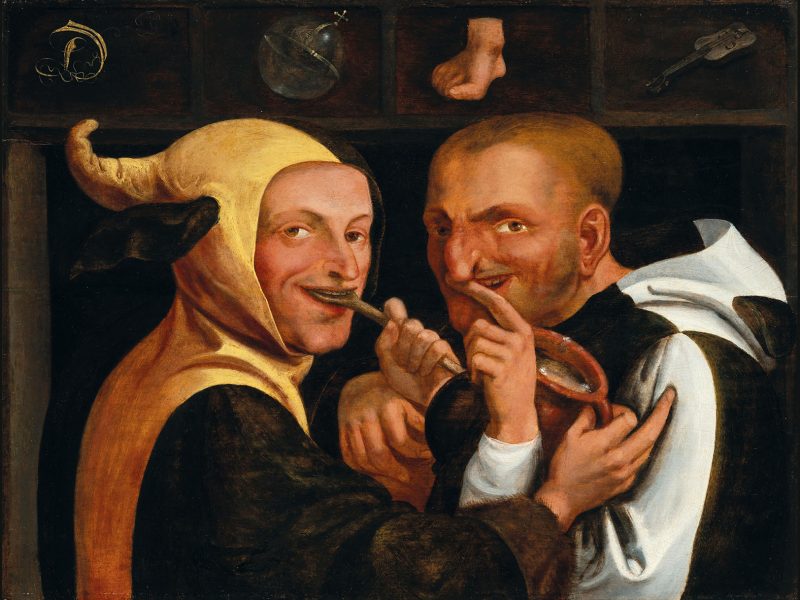
Humour and satire, vice and virtue: at the Old Masters auction on 10 November, a painting of the Netherlandish School of the 16th Century poses a riddle.
Picture Puzzle
The present panel is a vibrant example of the humorous, yet moralising, Flemish genre painting so sought-after by erudite collectors of the mid-16th century. In the current composition the symbols on the lintel above the two fools or ‘zotten’ denote a pictorial rebus, whose devices and hidden meaning were also employed by Frans Verbeeck (circa 1510-1570) upon the table in the foreground of his Mocking of The Human Follies, sold at Dorotheum 21 October 2014, lot 33. Inventories of the period show that pictures such as these were often hung in the dining rooms of the wealthy burghers in Mechelen and Antwerp. Despite the apparent vulgarity of the two Zotten, who leer at us as they gorge themselves on gruel, the picture is a conversation piece, its erudition delighting the informed viewer.
The gilded letter ‘D’ is De or ‘the’, whilst the crystal orb, usually seen in the hand of the Salvator Mundi represents the world or wereld. The voedt, or foot, is a pun on the Dutch for ‘feed’. Finally, the stringed vielle, is a play on vele meaning many, while the fools in their typical costume beneath complete the phrase De wereld voedt vele zotten, or ‘The world feeds many fools.’ This phrase should be seen in the context of the popular chambers of rhetoric or rederijkerskamers, which sprang up in Flemish towns in the period, staging a rich variety of satirical plays and poems that poked fun at human vices and follies.
Such depictions of half-length figures viewed from close up in a domestic setting originate with Quentijn Massijs, while they were made popular by Frans Verbeeck and his contemporaries.














